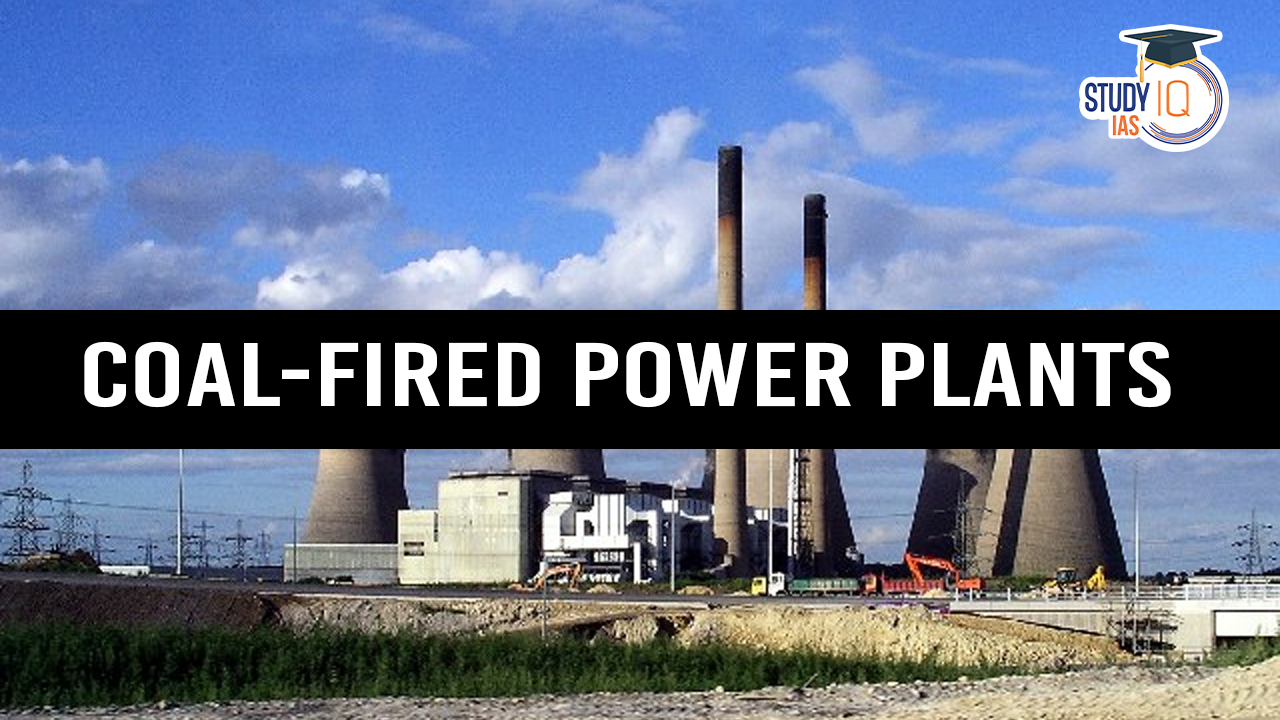Table of Contents
Context: A recent study led by researchers at Stanford University has revealed that coal-fired power plants are significantly reducing India’s rice and wheat yields.
Major Pollutants and Their Effects on Crops
Nitrogen Oxides (NOₓ)
- Phytotoxic (toxic to plants) – interferes with cellular function and enzymatic activities.
- Contributes to ozone (O₃) formation, which damages plant tissues.
- Reduces chlorophyll content, leading to lower photosynthesis rates.
Study Findings
- India loses up to 10% of rice and wheat yields due to NO₂ pollution.
- Rice and wheat yield losses = ₹7,000 crore (~$820 million) annually.
Sulphur Oxides (SOₓ)
- Causes acid rain, which lowers soil pH, reducing nutrient availability.
- Damages leaf surfaces, leading to stunted growth and reduced crop yield.
- Reduces soil microbial activity, affecting nitrogen fixation and plant growth.
Carbon Dioxide (CO₂)
- Excess CO₂ can boost photosynthesis (CO₂ fertilization effect), but when combined with higher temperatures and water stress, it reduces crop quality and yields.
Particulate Matter (PM10 & PM2.5)
- Blocks sunlight, reducing photosynthesis efficiency.
- Clogs stomata (leaf pores), restricting CO₂ uptake and leading to slower growth.
- Soil contamination from deposited ash reduces soil fertility and alters pH levels.
Heavy Metals (Mercury, Arsenic, Lead, Cadmium)
- Accumulates in soil, reducing nutrient uptake.
- Toxic to plants, leading to growth inhibition and lower yields.
- Can enter the food chain, posing health risks to humans.
Policy Recommendations
Renewable Energy Transition: Shift towards solar, wind and hydroelectric power to reduce coal dependence.
Pollution Control in Coal Power Plants
- Install Flue Gas Desulfurization (FGD) units to reduce SO₂
- Use Selective Catalytic Reduction (SCR) technology to cut NOₓ
- Upgrade Electrostatic Precipitators (ESPs) and Bag Filters to reduce PM emissions.
Agricultural Adaptation Measures
- Develop pollution-resistant crop varieties through biotechnology.
- Implement soil remediation techniques (e.g., liming) to restore fertility.


 Places in News for UPSC 2026 for Prelims...
Places in News for UPSC 2026 for Prelims...
 Lake Natron: Location, Features, Wildlif...
Lake Natron: Location, Features, Wildlif...
 Erra Matti Dibbalu Added to UNESCO Tenta...
Erra Matti Dibbalu Added to UNESCO Tenta...

























